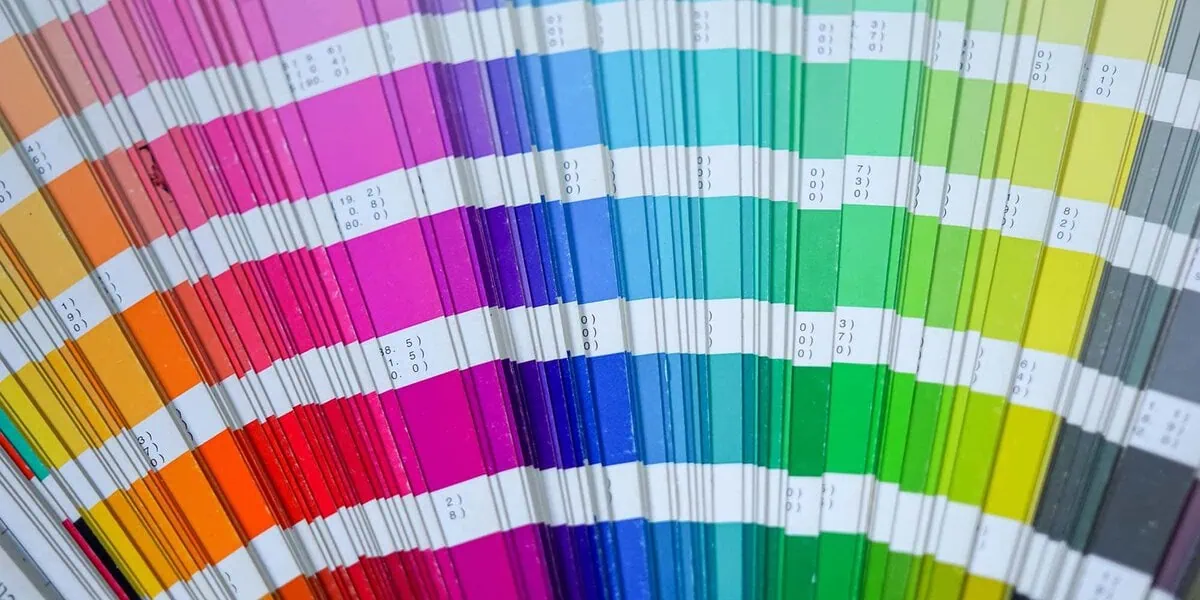In the world of graphic design and printing, mastering color is an essential skill. Whether you’re creating a stunning brochure, a vibrant poster, or a sophisticated magazine layout, understanding color is crucial to achieving the desired visual impact. Let’s be real… there is nothing worse than getting your perfectly tuned design back from the printer and the color is just… “off”.
The way we fix this is by understanding one of the most important aspects of color management. In the printing industry, we work with the CMYK color model. In this guide, we’ll dig into the intricacies of CMYK color and provide valuable insights for graphic designers looking to achieve outstanding printed results.
What is CMYK?
CMYK stands for Cyan, Magenta, Yellow, and Key (Black). It is a subtractive color model used in the printing industry to reproduce a wide range of colors by mixing these four ink colors.
Unlike the RGB (Red, Green, Blue) color model used for digital screens, which adds light to create colors, CMYK subtracts color to achieve the desired hue. Understanding this fundamental difference is key to producing accurate and vibrant printed materials.
Why CMYK Matters?
When designing for print, it’s vital to work in the CMYK color mode from the outset. Here’s why:
- Color Accuracy: CMYK is specifically designed for printing, so working in this color space ensures the colors you see on your computer screen closely match what you get in the final printed product. Take it from us… if you start in RGB and switch to CMYK, your design just won’t look right. So, begin with CMYK before you even start!
- Ink Limitations: Unlike digital displays that can produce millions of colors, printers can only reproduce a finite range of hues. By designing in CMYK, you can optimize your color choices to fit within these limitations.
- Consistency: Designing in CMYK ensures consistency across different print jobs and printers, reducing the risk of unexpected color variations.
Creating and Managing CMYK Colors
Now that you understand the importance of CMYK, let’s explore how to create and manage CMYK colors effectively:
- Color Profiles: Always work with the appropriate CMYK color profile for your printer or print service provider. Common profiles include SWOP (Specifications for Web Offset Publications) and GRACoL (General Requirements for Applications in Commercial Offset Lithography).
- Color Swatches: Create and use CMYK color swatches in your design software. This helps you maintain consistency and ensures that you use the same color values throughout your project.
- Check Black Text: For black text and elements, use rich black (C40 M40 Y40 K100) rather than plain black (K100) to enhance print quality and depth.
- Color Separation Preview: Most design software offers a color separation preview tool, allowing you to see how your design will be separated into the four ink colors. This helps you catch any potential issues before sending your file to the printer.
Common CMYK Challenges
While working with CMYK offers numerous advantages, it can also present some challenges:
- Gamut Limitations: CMYK can’t reproduce certain vibrant RGB colors, so be prepared for some color shifts when converting designs.
- Color Matching: Achieving exact color matches between different printers can be challenging, so it’s crucial to work closely with your print provider and perform color proofs.
- Print Quality: The quality of the printer, paper, and inks can significantly impact color accuracy, so choose your print partner wisely.
Mastering CMYK color is a vital skill for graphic designers in the printing industry. By understanding the nuances of this color model and following best practices for color management, you can create stunning and consistent printed materials that meet your clients’ expectations. Remember to collaborate closely with your print service provider(like RoyerComm), stay updated on the latest color trends, and continuously refine your skills to ensure your designs shine in the world of print. If you have any questions, please let us know, and someone from our team will be happy to help!
Request a Quote
Over the years we have accumulated a lot of knowledge about how to create compelling impactful marketing communications. We are here to answer any questions you might have or offer guidance to help take your project from good to GREAT! Give us a call today.
